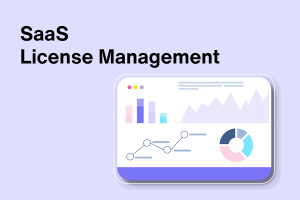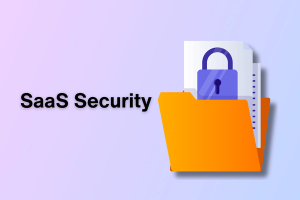What Is Games as a Service (GaaS) and Is It Still a Growing Model?
Updated September 17, 2024
Published September 17, 2024

What Is Games as a Service (GaaS) and Is It Still a Growing Model?
Games as a Service (GaaS) has changed the way we interact with video games, offering players more than just a one-time experience. With continuous updates and new content, GaaS keeps games fresh, while developers benefit from ongoing revenue streams that help sustain long-term engagement.
As the gaming industry evolves, there are questions about whether GaaS is still on the rise or beginning to plateau. Despite shifts in player habits and new technologies, GaaS continues to play a vital role in shaping how games are created and consumed today.
Looking ahead, GaaS remains a significant force in the gaming world, influencing both the development and monetization strategies of popular titles. The future of this model will likely determine the next phase of growth in the gaming industry.
What is Games as a Service (GaaS)
Games as a Service (GaaS) is a business model where video games are offered with ongoing updates and content rather than a one-time purchase. Instead of buying a game and playing it until you finish, GaaS games keep players engaged by offering new content, features, and events over time.
This model has changed how developers and publishers make money, relying on in-game purchases, subscriptions, or season passes to generate revenue. With GaaS, games can be constantly updated with fresh content, such as new levels, characters, or in-game rewards, keeping the experience exciting for players.
Games like Fortnite and Destiny 2 are great examples, as they offer free access but generate revenue through microtransactions and battle passes. Players stay invested because there's always something new to unlock, whether it’s cosmetic items or new gameplay challenges.
This approach also allows players to access games from anywhere through cloud gaming. It makes it easier to enjoy their favorite games on different platforms.
By offering flexibility, regular updates, and a variety of ways to play, Games as a Service has become one of the most popular models in the gaming industry today.
Games as a Service (GaaS Model) How It Works?
The GaaS model transforms how games are delivered and maintained, focusing on keeping players engaged with fresh content and flexible payment options.
Instead of a one-time purchase, this model allows games to evolve continuously, with developers adding new elements and offering different ways for players to enhance their experience.
The core characteristics of the GaaS distribution model include:
- Microtransactions:Players can purchase extra content like new characters, skins, weapons, or maps. These are optional but offer players a more immersive experience and keep the game exciting. Games like Apex Legends and League of Legends use microtransactions to allow players to customize their experience without impacting core gameplay.
- Regular Updates:GaaS games are updated frequently to introduce new features or content, keeping the experience fresh. Developers often use a seasonal model, releasing major updates every few months to bring new challenges or game modes.
- Community Engagement:Building a strong community around the game is essential. Developers encourage players to connect through in-game events, social media, or forums, which creates a loyal player base. Active community involvement helps the game grow and stay relevant.
- Ongoing Support:Developers continuously provide support, listening to feedback and making changes based on player behavior. This includes fixing bugs, adjusting mechanics, and offering new content based on player preferences, ensuring the game evolves with its audience.
- Marketing and Promotion:Keeping a game alive often involves regular marketing efforts, such as global campaigns, collaborations with influencers, and optimizing for SEO. This helps drive new players to the game and keeps it competitive in the market.
Payment Options in GaaS
The GaaS model also includes flexible payment options to suit different types of players. Here are the common payment structures:
- Flat Billing:Players are charged the same amount on a weekly, monthly, or yearly basis for access to premium features or content.
- Volume-Based Billing:Charges vary depending on the player’s level of engagement or content consumption. This allows heavy users to pay more based on how much they play.
- Tiered Model:Players are charged based on a unit range or access to specific levels of content, offering different tiers for various types of users.
These payment models, combined with in-game microtransactions, ensure developers can maintain the game over time while offering accessible and flexible pricing for players.
Is GaaS Growing Still Growing Rapidly?
The Games as a Service (GaaS) model has shown impressive growth over the past decade, continuing to shape the gaming industry.
However, while GaaS remains strong, there are signs that this rapid rise may face challenges.
Although the global video game market is projected to reach $254.6 billion by 2030, with GaaS playing a significant role, certain areas—like mobile gaming—have experienced a dip in consumer spending.
Despite these hurdles, key factors such as the rise of cloud gaming and the expansion of high-speed internet are helping GaaS maintain momentum in other regions.
- Growth in key regions: Countries like China and South Korea are seeing steady increases in GaaS popularity, with markets like the UK showing positive growth as well .
- Developer concerns: Despite these gains, 70% of developers have expressed doubts about the sustainability of live-service games, highlighting worries about whether the model can continue to drive profits while maintaining game quality .
- Successful titles lead the way: Games like World of Warcraft and Apex Legends are still thriving, showing that when developers focus on player experience and long-term updates, GaaS can be a win for both players and publishers .
While the growth continues, it's clear that GaaS will need to adapt to stay relevant, especially as players become more discerning about the games they invest in.
Continuous Player Engagement
One of the driving forces behind GaaS's success is its ability to keep players engaged with frequent updates and fresh content.
Players tend to stick with games that offer new challenges, rewards, and reasons to return.
But how do players feel about this approach?
- Positive experiences: Many players appreciate the constant flow of new content. Some have supported games for years because they feel that regular updates and reasonably priced add-ons, like battle passes, add real value.
- Concerns about quality: Gamers had felt that the GaaS model can lead to rushed releases. There are concerns that developers might launch games with bugs or incomplete features, hoping to fix them later with patches and updates. Certain games struggle due to these issues, leaving players frustrated with unfinished products.
- Limited player bandwidth: Many gamers admit they can only focus on one or two live-service games at a time. This means popular titles with well-established communities often get the most attention, leaving little room for newer games to gain traction unless they offer something truly unique.
While continuous engagement keeps players coming back, it’s clear that not all live-service games succeed.
Players are looking for polished, meaningful content and are quick to drop games that don’t meet their expectations. Striking the right balance between regular updates and maintaining game quality is key to long-term success in the GaaS space.
GaaS Monetization Models and How They Work
Games as a Service (GaaS) utilizes several key monetization models to generate ongoing revenue. These models allow developers to continuously engage players and extend a game’s lifespan beyond its initial release. Here’s a look at the most common GaaS monetization models and how they work.
Freemium Model
The freemium model is highly popular in mobile and free-to-play games, offering players access to the base game for free while monetizing through optional purchases.
- How it works: Players can enjoy the game at no cost, but are encouraged to purchase virtual items, cosmetic upgrades, or battle passes to enhance their experience.
- Why it works: It attracts a large player base by being free to play and offers non-essential purchases that don't impact gameplay but still drive revenue.
- Examples: Fortnite and Candy Crush Saga are key examples, a model that dominates the mobile gaming industry, with over 85% of mobile game revenue coming from free-to-play titles.
Subscription Model
This model charges players a recurring fee, either monthly or annually, to access a game or a library of games.
- How it works: Players subscribe for full game access, which often includes regular content updates and expansions.
- Why it works: Subscriptions create a steady and predictable revenue stream for developers while providing continuous value to players.
- Examples: World of Warcraft operates on a subscription basis, while services like Xbox Game Pass offer access to multiple games for a monthly fee.
Microtransactions
Microtransactions involve small, frequent in-game purchases for virtual goods, currency, or other content.
- How it works: Players can make low-cost purchases such as skins, loot boxes, or power-ups. Though individually inexpensive, these transactions add up quickly.
- Why it works: The low price point encourages impulse buying, and when designed well, it enhances the player experience without being intrusive.
- Examples: Mobile games like Candy Crush Saga and Pokémon Go are known for their reliance on microtransactions to generate revenue.
Season Passes
Season passes provide time-limited access to premium content, encouraging ongoing player engagement throughout a game’s lifecycle.
- How it works: Players purchase a pass that unlocks exclusive content, challenges, and rewards for a specific period (often a few months).
- Why it works: This model keeps players regularly invested in the game by offering unique, seasonal content and incentives.
- Examples: The Fortnite Battle Pass and Rocket League Rocket Pass have proven successful in keeping players engaged and spending.
Downloadable Content (DLC)
DLC refers to additional game content that can be purchased after the base game’s release, extending its longevity and offering new experiences.
- How it works: Players buy new levels, characters, or storylines through one-time purchases or as part of a season pass.
- Why it works: DLC keeps the game relevant and exciting for players, providing fresh content and generating additional revenue for developers.
- Examples: The Sims 4 and Civilization VI both rely on DLC to provide ongoing content for their players.
Advertising
In-game advertising offers a revenue stream, especially in mobile and free-to-play games, where ads can be less disruptive to the player experience.
- How it works: Ads appear in the game as videos on loading screens or are integrated into the game’s environment, such as product placements.
- Why it works: Players can access the game for free while developers earn revenue from advertisers. This works best when the ads are not too invasive.
- Examples: Casual mobile games often use this model, where players watch ads in exchange for in-game rewards.
Game Bundles
Game bundles offer collections of multiple titles at a discounted price, often used to introduce players to new or less popular games.
- How it works: Developers bundle together high-value games with less popular titles, offering the collection at a reduced price.
- Why it works: Bundles increase the potential reach of lesser-known games while providing great value to players.
- Examples: Game bundles are popular on platforms like Steam, where players can purchase entire game collections at a discount.
Cloud Gaming Services
Cloud gaming services offer subscription-based access to a wide variety of games, allowing players to stream games directly from the cloud.
- How it works: Players pay a monthly or annual fee to access a library of games hosted in the cloud, eliminating the need for high-end hardware.
- Why it works: Players save money by not purchasing individual games and can access high-quality titles on various devices.
- Examples: Google Stadia and PlayStation are prime examples of cloud gaming services offering extensive game libraries for a subscription fee.
The success of GaaS monetization relies on balancing player value with revenue generation. Combining multiple models allows developers to provide continuous updates and new content, ensuring a steady flow of income while keeping players engaged for the long term.
Final thoughts
As the industry continues to evolve, players have voiced concerns about how GaaS models prioritize profit, sometimes at the expense of game quality. Many believe that while GaaS can offer exciting new content, it risks alienating players if monetization feels too aggressive.
Moving forward, the sustainability of GaaS will depend on finding the right balance between delivering value to players and maintaining profitability, as seen in player feedback about fair gameplay and updates. GaaS remains a strong force, but its future hinges on adapting to both market trends and player expectations.
Frequently Asked Questions
Share This Post
Ada Rivers
Ada Rivers is a senior writer and marketer with a Master’s in Global Marketing. She enjoys helping businesses reach their audience. In her free time, she likes hiking, cooking, and practicing yoga.
Allow cookies
This website uses cookies to enhance the user experience and for essential analytics purposes. By continuing to use the site, you agree to our use of cookies.






